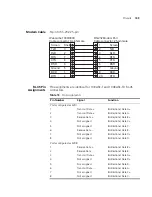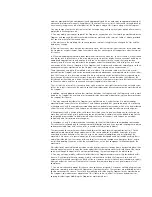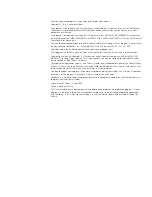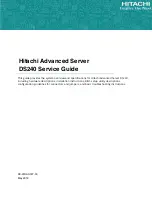
160
G
LOSSARY
DNS
Domain Name System. This system maps a numerical Internet Protocol
(IP) address to a more meaningful and easy-to-remember name. When
you need to access another device on your network, you enter the
name of the device, instead of its IP address.
Ethernet
A LAN specification developed jointly by Xerox, Intel and Digital
Equipment Corporation. Ethernet networks use CSMA/CD to transmit
packets at a rate of 10 Mbps over a variety of cables.
Ethernet address
See
MAC address
.
Fast Ethernet
An Ethernet system that is designed to operate at 100Mbps.
FTP
File Transfer Protocol. A protocol based on TCP/IP for reliable file
transfer.
full duplex
A system that allows packets to be transmitted and received at the
same time and, in effect, doubles the potential throughput of a link.
gateway
See
router
.
half duplex
A system that allows packets to transmitted and received, but not at
the same time. Contrast with
full duplex
.
HTTP
Hypertext Transfer Protocol. This is a set of rules for exchanging files
(text, graphic images, sound, video, and other multimedia files) on the
World Wide Web.
IETF
Internet Engineering Task Force. An organization responsible for
providing engineering solutions for TCP/IP networks. In the network
management area, this group is responsible for the development of the
SNMP protocol.
Intranet
An Intranet is an organisation wide network using Internet protocols
such as web services, TCP/IP, HTTP and HTML. An Intranet is normally
used for internal communication and information, and is not accessible
to computers on the wider Internet.
IP
Internet Protocol. IP is a layer 3 network protocol that is the standard
for sending data through a network. IP is part of the TCP/IP set of
protocols that describe the routing of packets to addressed devices.
IP address
Internet Protocol address. A unique identifier for a device attached to a
network using TCP/IP. The address is written as four octets separated
Summary of Contents for 3C16115-US - SuperStack 3 Webcache 1000
Page 10: ......
Page 16: ...16 ...
Page 24: ...24 CHAPTER 1 INTRODUCING THE WEBCACHE ...
Page 56: ...56 ...
Page 66: ...66 CHAPTER 4 MANAGING THE WEBCACHE ...
Page 74: ...74 CHAPTER 6 SECURITY ...
Page 96: ...96 CHAPTER 10 SYSTEM DIAGNOSTICS ...
Page 107: ...III COMMAND LINE INTERFACE Chapter 12 Command Line Interface ...
Page 108: ...108 ...
Page 127: ...IV PROBLEM SOLVING Chapter 13 Problem Solving ...
Page 128: ...128 ...
Page 136: ...136 CHAPTER 13 PROBLEM SOLVING ...
Page 138: ...138 ...
Page 146: ...146 APPENDIX A SAFETY INFORMATION ...
Page 150: ...150 APPENDIX B CABLE SPECIFICATIONS AND PIN OUTS ...
Page 158: ...158 APPENDIX D TECHNICAL SUPPORT ...
Page 164: ...164 GLOSSARY ...
Page 170: ...170 INDEX ...
















































